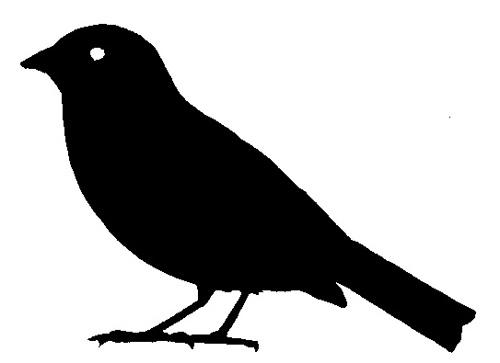(Latin: Passer domesticus)

These familiar little birds are probably more dependent upon man than any other. They live in small colonies, and build their nests close together.
House sparrows are stationary birds, and after they have started to breed in a place they will remain there for the remainder of their life which may be 3-4 years. They use the nests to sleep in during the winter.
In March and April the breeding birds collect nest material, mainly dry grass, hair, feathers and scraps of paper, which they use to build their untidy more or less spherical nests. A pair may rear two or three broods in the course of the summer. House sparrows forage on the ground, often in flocks. The young are fed on insects, but the adults live mainly on seeds and in towns on household waste. In the country they frequently invade stores of grain and fodder. They cause serious damage to stored foodstuffs




